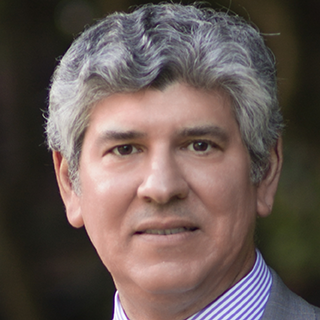ISPOR: How Are We Possibly Going To Afford Gene Therapies That Have Price Tags in the Millions?
Panelists at 2021 ISPOR say price shouldn't be barrier. Suggestions include steep payment discounts if therapies don't meet outcome goals and regulators removing withdrawing approvals if the therapy doesn't work.
Gene therapy’s prospects as a more common clinical reality have suffered some important setbacks recently. Last year, the FDA rebuffed the application for Roctavian, a gene therapy for hemophilia A, asking the manufacturer, BioMarin Pharmaceutical, for more follow-up data. And in January, a cloud descended on Sarepta Therapeutics when it announced that its gene therapy for Duchene muscular dystrophy failed to meet its main endpoint in a phase 2 trial; the biotech’s stock price dropped in half. This week, though, things are looking up for the Cambridge, Massachusetts, company as it announced some positive results in 11 patients.
It is against this backdrop of the promise of gene therapy but also a zigzaggy sort of progress that a panel discussed how to pay for the staggeringly high cost of gene therapy during the ISPOR 2021 meeting, which is being held virtually.
Michael Sherman

As long as gene therapy that is priced in the millions of dollars (Zolgensma for spinal muscular atrophy, for example) is approved for very few patients with very rare conditions, managing the cost hasn’t presented much of a problem for payers, said one of the panelists Michael Sherman, M.D., MBA, M.S., an executive vice president and the chief medical officer at Harvard Pilgrim Health Care and Tufts Health Plan. “We can kind of skate around at the edges in solving various things because none of those are going to break the bank,” he said during the discussion yesterday afternoon. It is different story, though, said Sherman, if “transformational therapies” become available for larger numbers of members,
Sherman, who is nationally known for the outcomes-based contracts he has negotiated with drug manufacturers for Harvard Pilgrim, served up a smorgasbord of ideas for how ultra-high-priced gene therapies might be paid for and the costs managed, ranging from some version of indication-based pricing to steep price discounts if the ultra-high-priced therapies aren’t as effective as intended.
“If you're talking about a million to $2 million, or perhaps eventually a $3 million treatment, if it doesn't work, it's worth a lot less, and maybe not 10 or 20%, less, maybe 90% less,” Sherman said. “So, the greater the price, the more that there needs to be a risk element (for drug manufacturers).
But Sherman also emphasized that financing and payment shouldn’t be insurmountable obstacles: “I think it’d be a shame if we let the fact that our financing system for healthcare — the fact that it was not designed for these kinds of therapies — to be a barrier.”
And notwithstanding the recent setbacks, Sherman expressed confidence in the advent of gene therapy into American healthcare: “My litmus test here is always, knowing what I know, would I want this for a member of my family? And more and more, the answer is yes. So, it becomes for someone in a health plan position, not how do you say no, but how do you say yes.”
The ISPOR panel discussion was titled, “Can We All Afford a Cure? The Greatest Challenge Now Facing Payers.” The other panelists were Debra Miller, the CEO and founder of CureDuchene, a patient advocacy group that has a venture philanthropy arm that invests in companies developing therapies for Duchene muscular dystrophy, and Ramesh Arjunji, Ph.D., vice president for value and assessment for AvroBio, a Cambridge, Massachusetts, biotech company developing gene therapy treatments for lysosomal disorders.
Debra Miller

Miller, whose 24-year-old son has Duchene muscular dystrophy, discussed the problems of mounting clinical trials for rare diseases such as her son’s and enrollment of subsets of patients for whom the therapy may be more likely to be successful.
“If you are only going to put very young patients in a clinical trial does that mean the label is restricted to only very young patients and what does that [mean] for patients who are older? Do they just sit back and watch as the young kids get a treatment, and they are left out?” Miller said.
Miller told her fellow panelist and the online audience that she favors regulators using their power to withdraw approval of therapy rather than holding up the approval: “From a patient advocacy standpoint, I would prefer being more liberal on approving and getting these therapies paid for knowing that there's a mechanism to stop them if they are proven to being an effective or unsafe, versus just saying, let’s wait and see, and letting all of these patients potentially forgo a life-saving therapy.”
Miller said patient advocacy groups need to talk to people like Sherman and consider fair pricing. Patient advocate groups need to work with drug developers (“we’re desperate, our kids are dying, and we’ll do anything we possibly can to save our kids) but she also warned about patient advocates being “used” by companies.
“I think it's one thing to have passionate advocates within the companies that work with patient groups. But I think it's very detrimental for patient groups to be so in line with companies, that they are basically doing their lobbying for them," Miller said.
Arjunji, representing the manufacturer’s point of view, said developers can have the biggest impact by collecting data that demonstrates value. “If that is done right, then everything else that follows, the setting up of fair price…and then trying to manage the impact of the price through some kind of financial contract or performance-based contract, all of those things can be managed better."
Here are some of the other topics that Sherman touched on in his wide-ranging remarks:
- Gene therapies might have very different effects depending on which subset of patients they are used in. He gave the example of a 30-year-old person with hemophilia with end-stage organ damage compared with a newborn with the disease. “It doesn’t mean that (older) person shouldn’t have access to gene therapy. But if you are trying to come up with a price that is tied to benefit and to the value, you may need two different prices.” The one-drug, one-price model may need to change.
- If price is going to hinge on outcome measures, the measures “need to be more specific and a little meatier. It shouldn’t just be whether the patient dies.”
- At a minimum, manufacturers should be willing to take on financial risk based on outcomes that they used to get FDA approval.
- “Portability” and how costs should be managed and shared when people switch health insurers needs to be figured out. “What happens if the member goes from one payer to another or goes from a commercial payer to a government program, or vice versa?"
- Medicaid programs may be the “canary in the coal mine” for ultra-high-priced therapies because they have to balance their budgets year to year and “the states are the ones not pretending that’s an unlimited budget.”
2 Commerce Drive
Cranbury, NJ 08512
All rights reserved.